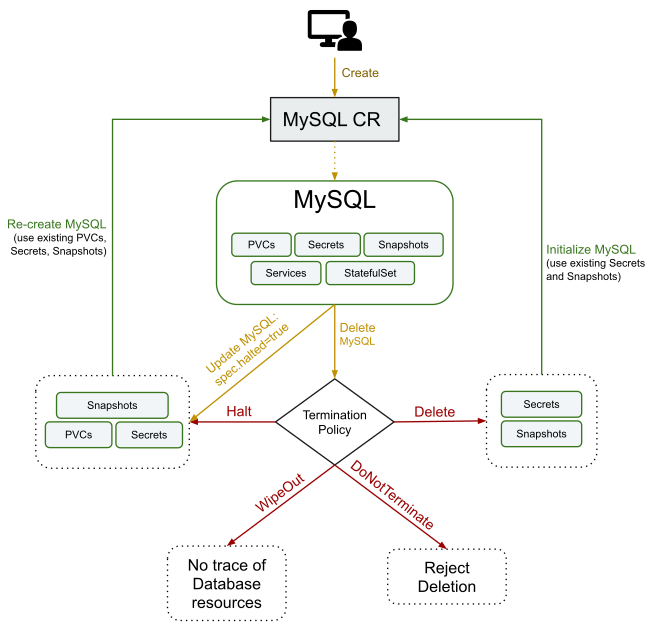You are looking at the documentation of a prior release. To read the documentation of the latest release, please
visit here.
New to KubeDB? Please start here.
Supported MySQL Features
| Features | Availability |
|---|---|
| Group Replication | ✓ |
| Innodb Cluster | ✓ |
| SemiSynchronous cluster | ✓ |
| Read Replicas | ✓ |
| TLS: Add, Remove, Update, Rotate ( Cert Manager ) | ✓ |
| Automated Version update | ✓ |
| Automatic Vertical Scaling | ✓ |
| Automated Horizontal Scaling | ✓ |
| Automated Volume Expansion | ✓ |
| Backup/Recovery: Instant, Scheduled ( Stash ) | ✓ |
| Initialize using Snapshot | ✓ |
| Initialize using Script (*.sql, *sql.gz and/or *.sh) | ✓ |
| Custom Configuration | ✓ |
| Using Custom docker image | ✓ |
| Builtin Prometheus Discovery | ✓ |
| Using Prometheus operator | ✓ |
Life Cycle of a MySQL Object

User Guide
- Quickstart MySQL with KubeDB Operator.
- Backup & Restore MySQL databases using Stash.
- Initialize MySQL with Script.
- Monitor your MySQL database with KubeDB using out-of-the-box Prometheus operator.
- Monitor your MySQL database with KubeDB using out-of-the-box builtin-Prometheus.
- Use private Docker registry to deploy MySQL with KubeDB.
- Use kubedb cli to manage databases like kubectl for Kubernetes.
- Detail concepts of MySQL object.
- Detail concepts of MySQLVersion object.
- Want to hack on KubeDB? Check our contribution guidelines.



































